Joseph Jackson Spent Time Under his Microscope While in Lockdown
For more stories like this, please subscribe to The Phoblographer
“I immensely enjoyed getting lost in these little worlds, at a time where we were all very isolated”, says Joseph Jackson. “…hopefully it will make people look at the everyday objects around them in a new way, seeing the hidden beauty in mundane objects”, he mentions about his project Odyssey. Beginning in March 2020, the UK had imposed several weeks of lockdown in response to the Covid-19 pandemic. Just prior to its start, Joseph grabbed some boxes of equipment from his studio in London to spend his time at home creatively.
Want to get your work featured? Here’s how to do it!
Some might say that the UK lockdown rules were among the harshest in the world. Many British friends I’d spoken to certainly echoed this sentiment. In general, 2020 was probably the harshest year that many of us have lived through. Some of us focused our time on learning new skills. Creative folk like Joseph managed to make the best out of the lockdown by focusing on passion projects like Odyssey. Proving that you don’t always need to look far beyond your immediate surroundings for interesting ideas, he shows us how everyday objects can look like art when viewed closely.
“This project came out of the limitations of lockdown in the UK due to Coronavirus. We knew that there was a good chance that we were going to have to remain at home for the foreseeable future, so I grabbed a few boxes of equipment from the studio to take home.”
The Essential Photo Gear of Joseph Jackson

Joseph told us:
Macro Setup
Still Life
- PhaseOne IQ3 100
- Sinar P2 Large format Camera
- Schneider 80mm f4.5 Super-Symmar XL Lens
- Broncolor Grafit A4 3200
- Broncolor Pulso G Twin
“We found the Zeiss Stemi 508 to be a good allrounder in terms of magnification and excellent image quality. We paired this with a Sony A7r IV and, using a sigma EF adaptor, connected it to the EF bayonet mount on the Zeiss Trinocular mount, and we had a solid platform to work with.”
The Phoblographer: Tell us a bit about yourself. How did you get into photography and the kind of work you specialise in?
Joseph Jackson: My father was a photojournalist, so I was exposed to photography from a very young age. We had a darkroom in our cellar where I would spend hours developing images of the surrounding Yorkshire countryside. From there, I studied graphic design at university until I was drawn back to photography when I moved to London. I started at the bottom of the ladder working in a photographic studio as a runner before assisting a wide range of well-known photographers in fashion, advertising and portraiture. Having such a broad basis was invaluable, but it was in still life where I found my calling. I quickly realised that I was much more at home photographing objects rather than people. By a stroke of luck, I got a call from Dan Tobin Smith, who was looking for an assistant, and I jumped at the chance. Our aesthetics were clearly aligned, and he both had interests in science and technology.
After a few years, he asked if I would like to be involved in an experimental creative studio, he was looking to set up, and Optical Arts was born. My work covers a fairly broad range as we are a multi-disciplined studio. I specialise in the practical elements of photography and film, but also help with advising for lighting and textures in the CGI projects. I try to push the boundaries of what can be shot in-camera, creating custom rigs and lighting setups and blurring the boundaries between practical and CGI.
The Phoblographer: How was the microscope rigged to your camera? Tell us in detail about the setup and how you went about taking these images.
Joseph Jackson: As a studio, we’ve been exploring microscopic photography for a while. In the beginning, we explored a number of different methods. Through some research, we found that Hasselblad actually made a microscope adaptor for the V series, so we hunted one down on eBay and gave it a go. Aligning the sensor and the image plane was difficult; when using film this wouldn’t have been such an issue, but due to the reduced depth of field with digital, it essentially made it a tilt-shift set up and difficult to control. It worked OK, but the main limitations were the optics of the older microscope we had. We also explored using the Sinar P2 large format camera with the standard microscope, creating a custom lens board to mount the microscope to; this way we could move the rear standard to compensate for alignment and focus comps. On the downside, the image circle of the microscope along with the position of the rear standard meant that very little of the sensor was actually used. We managed to get some images from these methods, but we weren’t satisfied with the image quality, or the practicality of the setup, manual rolling through the focuses at such magnifications was less than ideal.
We then started to explore what was on the commercial market and the use of Trinocular microscopes. These have a third element coming out of the rear of the microscope that a camera can be attached to. We found the Zeiss Stemi 508 to be a good allrounder in terms of magnification and excellent image quality. We paired this with a Sony A7r IV and, using a sigma EF adaptor, connected it to the EF bayonet mount on the Zeiss Trinocular mount, and we had a solid platform to work with.
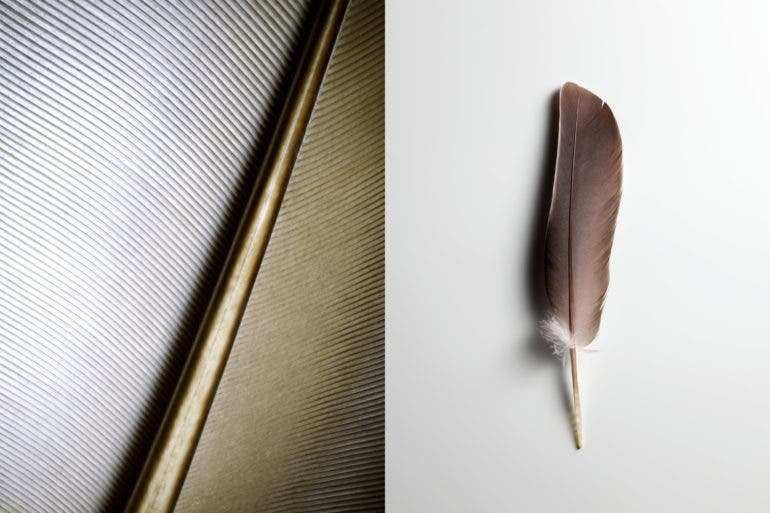
The Phoblographer: Were all the images shot at the same magnification factor? If not, please explain what influenced the choices for the various images.
Joseph Jackson: The macro images ranged [from] 10x to 80x magnification. I treated each image individually, exploring a range of different magnifications. It quickly became apparent what magnification worked for each image. It was finding a happy balance between too abstract and too descriptive. When too much of the object was visible or a prominent feature such as an edge, it gave a reference of scale and the whole illusion was lost.
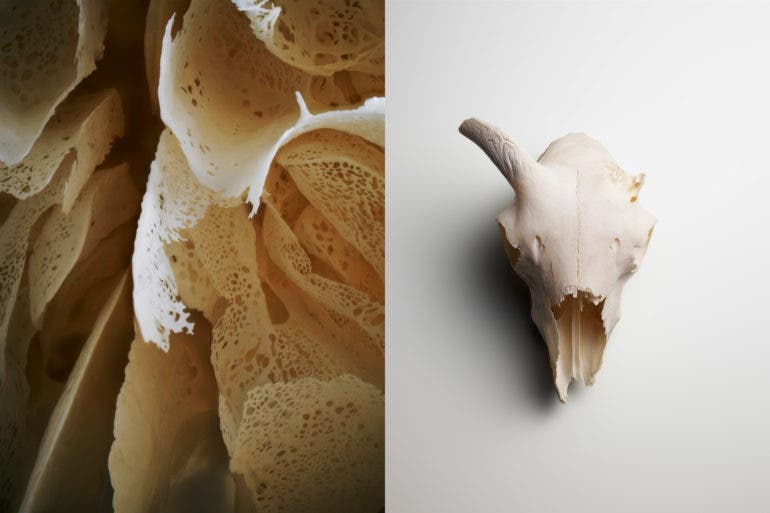
The Phoblographer: How did you deal with shallow depths of field and issues like chromatic aberration? Were there any other unexpected technical difficulties you faced?
Joseph Jackson: The microscope has a fixed aperture – I’ve tried to work out what it is but never managed to get a decent answer, but it’s shallow. I used the Cognisys Stackshot motion control system to move and rotate the object. This allowed me to compose the images with a high degree of accuracy. I would have preferred to move the camera to stack the focus, but due to the size of the microscope it wasn’t practical. Depending on the magnification of each composition, it could be anywhere from 30 to 100 individual focuses. I often tried to focus through the whole image as this gave me some flexibility in post to pick and choose the depth of field. Much of the time, I was in the dark as to what the final image was going to look like. I found parallels to developing images and watching the image come together in the focus stacking software rather than the darkroom.
I used a couple of different software to stack the focuses. I ran all the images through Zerene Stacker and Helicon Focus and compared them side by side, each software has its strengths and weaknesses, and it was pot luck as to which software put out the best composite.
Surprisingly there was very little aberration in the images. I put this down to the quality of the Zeiss optics; it’s most noticeable on the wire brush, but I liked it so left it in. I battled multiple difficulties; the setup was technically complicated and took time to iron out the many glitches. The biggest frustration was vibrations; working at such large magnifications meant that any camera shake in any of the focus comps meant that it wouldn’t stitch properly, and I’d have to reshoot the whole sequence again. I learnt the hard way to check the images before breaking each setup.
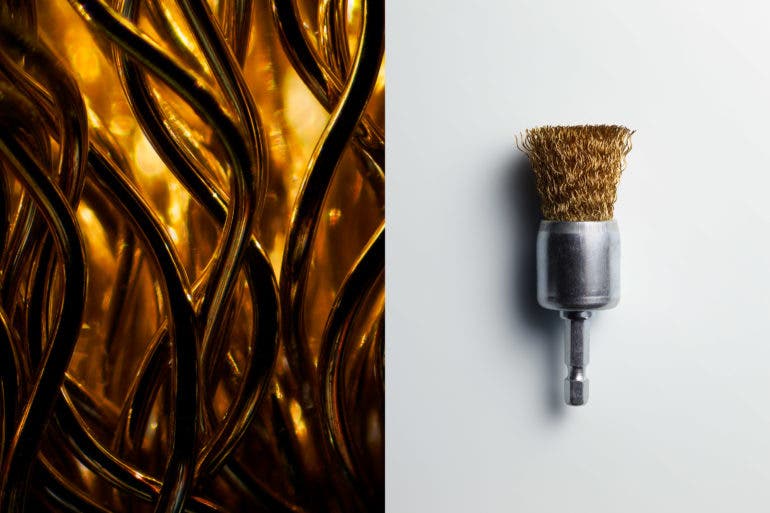
The Phoblographer: Compared to images shot on standard camera lenses, what were the challenges for post-processing these microscopic images?
Joseph Jackson: In terms of post-production there is very little retouching on the macro images. I wanted to be as true as possible to the materials. Most of the post-processing came in the form of focus stacking the images; both Helicon and Zerene are excellent at this, but even with the still life images, I had to stack these as the depth of focus on digital is so terrible. I normally shoot a shot at f32 or above with digital as a reference to see where the focus starts to fall off naturally and then recreate this with stacked focus plates.
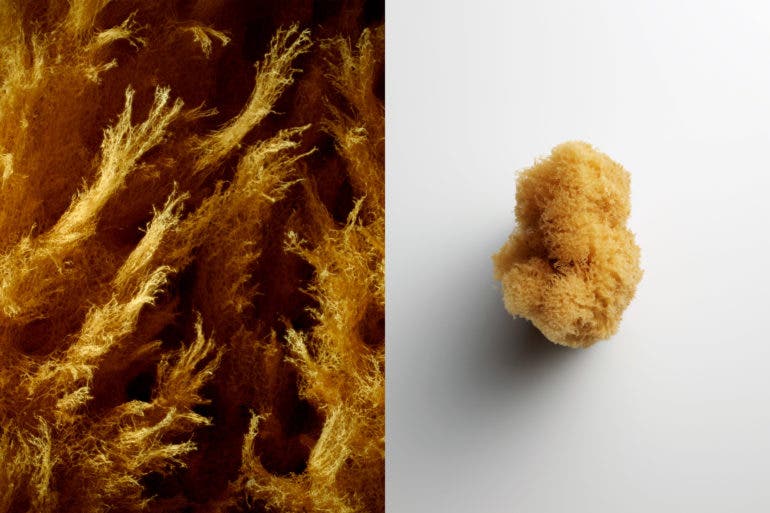
The Phoblographer: What was the impetus for this project? Boredom? Frustration? How were you trying to creatively express yourself?
Joseph Jackson: This project came out of the limitations of lockdown in the UK due to Coronavirus. We knew that there was a good chance that we were going to have to remain at home for the foreseeable future, so I grabbed a few boxes of equipment from the studio to take home. I couldn’t take large flash packs and cameras etc., so I made the decision to take the microscope home with the Sony and Cognisys, my logic being that it was a small but versatile setup. I’d wanted to do more with the microscopic work for a while, and the idea of escaping into these miniature worlds was a way to keep creative in a difficult situation.
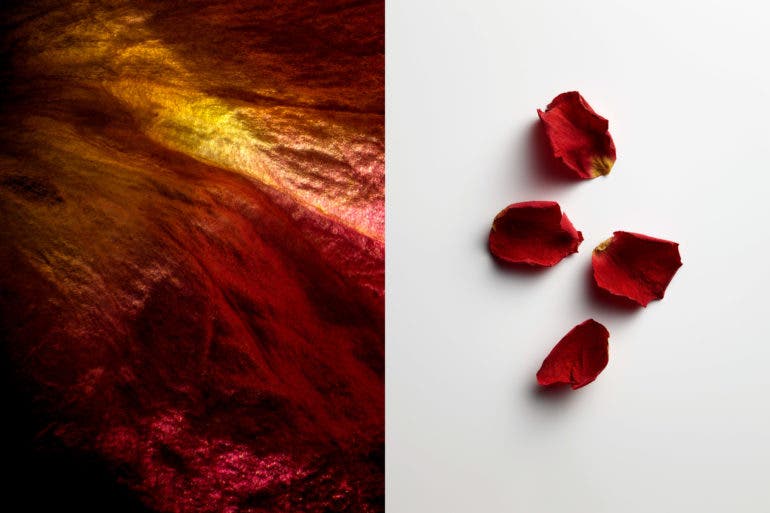
The Phoblographer: Are any of these objects really important to you? For example, is that your favorite knife?
Joseph Jackson: The objects were things that I had available in the house. It was quite enjoyable to rummage through draws and cupboards, looking for objects that might be interesting viewed in miniature. I tried to choose a range of materials from natural to man-made as I felt this would give a good range of textures to the project. The majority of these objects could be found in most people’s houses, with the exception of a sheep’s skull maybe. Hopefully it will make people look at the everyday objects around them in a new way, seeing the hidden beauty in mundane objects.
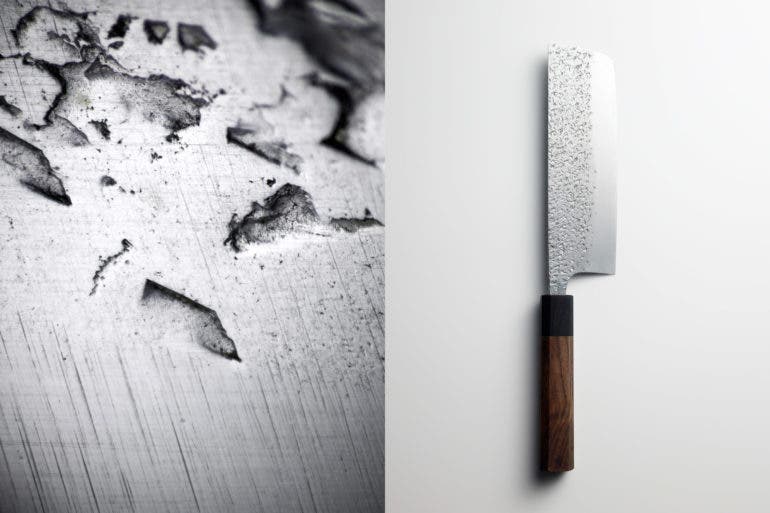
The Phoblographer: How did you illuminate these objects so evenly? Were there additional light sources besides the ones built into the microscope?
Joseph Jackson: The Zeiss Microscope came with a small LED light source that would be adequate for scientific viewing but was limited for what I needed. We constantly look for different lighting devices and techniques at the studio. For this project, I used LED fibre optic lights. These are mainly used in science and testing labs, but they are perfect for what I needed. They have a 1100 lumens output and a fibre optic attachment so the light output can be close to the object without having a bulky light source taking up too much room. I used the light to try and represent the materials in the best way I could; if they were semi-opaque I backlit the object to show some of the texture. The light bulb was actually lit by itself in the end and gives some idea of how much light was needed for the microscope as it’s a 60w equivalent LED light bulb.
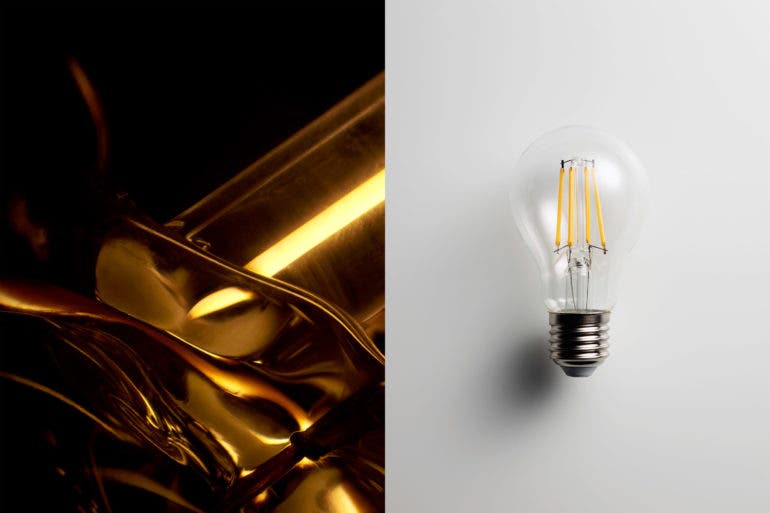
The Phoblographer: In some ways these microscopic images are like landscapes of their own. When you shot these, what were your emotions like? Was there a Eureka moment?
Joseph Jackson: Like all projects, it was definitely a process. I had a rough idea of what I wanted to achieve, but I didn’t restrict myself to a definitive idea but rather embrace the flexibility of happy accidents. I spent a couple of days just looking at different objects under the microscope and working out what direction I wanted to take the project. My Eureka moment came when I put the toothbrush under the microscope and looked at the backlit bristles. I was instantly transported to vivid memories of swimming above sea anemone.
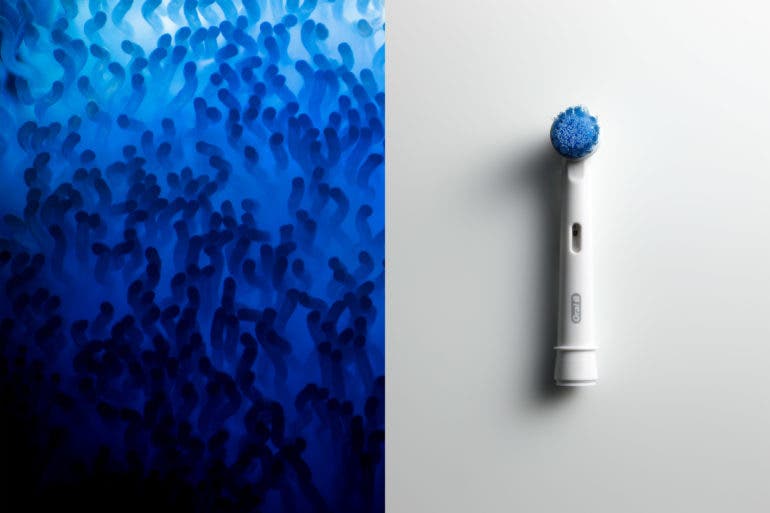
The Phoblographer: What was that deciding factor that made you stop and press the shutter as you moved each object under the microscope to analyse them?
Joseph Jackson: Everything had to be right. The composition and lighting had to show the material at its best. As the process for each image was so involved with up to 100 individual presses of the shutter rather than one. Each image had to be good enough to warrant the time it took to shoot, which was considerable. I quickly restricted myself to two macro shots per image, or I would spend too long shooting small variations of the same shot. There was also an element of imagination to factor in; due to the depth of focus being so narrow, I had to imagine what the image would look like once focus stacked. A few times, I’d be caught out and the composition or lighting would be way off. That’s what was so enjoyable about this process; it took me back to seeing the image come to life in the developing tank and the excitement and frustrations that are associated with seeing the results. It wasn’t the instant gratification that you normally associate with digital photography.
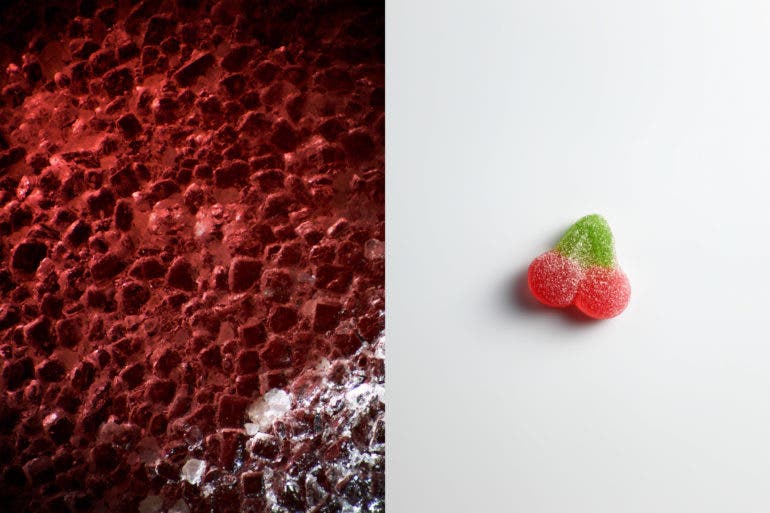
The Phoblographer: What does the infinite world under a microscopic lens feel like to a photographer? Do you feel like this series deserves a continuation in the future?
Joseph Jackson: I immensely enjoyed getting lost in these little worlds, at a time where we were all very isolated. It was invaluable to have this project to immerse myself in, With a good balance of problem solving, creativity and making do with the things that I had around me. I’ve got some other projects I’m working on at the moment, so I’m going to take a break from the microscopic world as I’ve recently just finished creating a film version of Odyssey, which had all the difficulties of the stills but with the added complications of moving the objects and the lights. I do however have a couple of ideas that I want to explore. I’d love to create an educational resource for children to peak their interest in material science as it’s a pretty amazing topic. It was a close call for me to choose the creative industry over science; the merging of the two by photographers such as Bernice Abbott have been a huge inspiration to me, so I’d definitely like to follow in her footsteps and give something back.
All images by Joseph Jackson. Visit his website, Vimeo page and personal and studio Instagram pages to see more of his work.